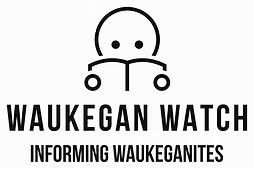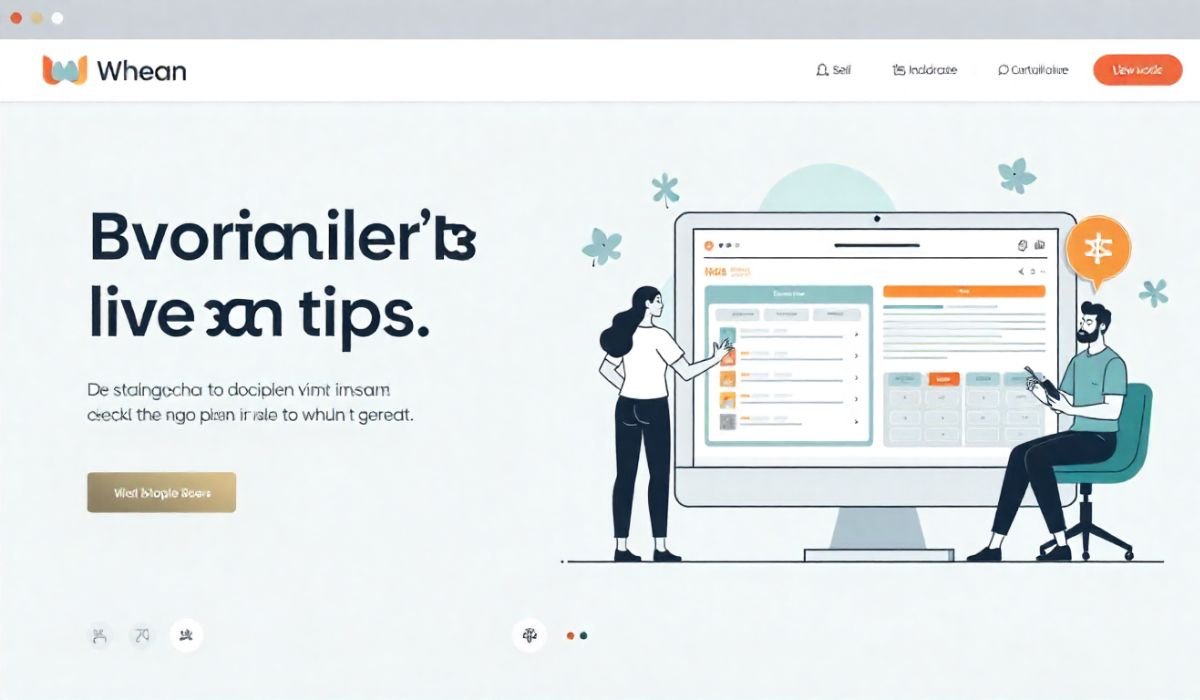Feeling like your money has a mind of its own? You’re not alone. That sense of overwhelm, staring at a spreadsheet (or avoiding it altogether), is a universal rite of passage for young adults and first-time budgeters. The world of personal finance is buzzing with complex jargon, but getting a handle on your cash doesn’t require a finance degree. It just requires a clear, actionable plan.
That’s precisely why we built wheon.com—to cut through the noise and deliver practical, straightforward advice that works in the real world. This article is your curated starter kit, distilling the most foundational wheon.com finance tips into a step-by-step guide. By the end, you’ll have a clear roadmap to move from financial confusion to genuine confidence, starting today.
The Foundational Pillar: Mastering Your Personal Budget
Before you can invest, save, or even effectively pay off debt, you need to know where your money is going. A budget isn’t a financial straitjacket; it’s a spending plan that gives you permission and freedom. It’s the single most important step in taking control.
Building a “Zero-Based” Budget
The most effective method for beginners is the zero-based budget. The concept is simple: your income minus your expenses should equal zero. This doesn’t mean you spend every last dollar, but that you assign every single dollar a job—whether it’s for rent, groceries, savings, or fun.
- How to start: For the next 30 days, track every single expense. Use a simple app, a notes document, or the classic pen-and-paper method. The goal isn’t to judge, but to observe. You’ll quickly spot patterns—like how much you’re actually spending on takeout or subscriptions.
- Apply a Framework: A great starting template is the 50/30/20 rule. Allocate 50% of your after-tax income to needs (rent, utilities, groceries), 30% to wants (dining out, hobbies), and 20% to savings and debt repayment. This isn’t a rigid law, but a fantastic benchmark to adjust from.
Automating Your Financial Flow
Willpower is a finite resource. The easiest way to stick to your budget is to take yourself out of the equation.
- Set It and Forget It: The moment your paycheck hits your account, set up automatic transfers. Send your savings and investment contributions to their respective accounts immediately. Schedule bill payments for just after payday. What’s left in your checking account is what you have for your variable spending.
- Use Your Bank’s Tools: Many banks now offer features that let you create “buckets” or sub-accounts within your main savings account. You can have one for “Emergency Fund,” one for “Vacation,” and one for “New Laptop.” Seeing these separate, growing funds is incredibly motivating and keeps you from accidentally dipping into money earmarked for other goals.
A Two-Pronged Attack: Eliminating Debt and Securing Your Safety Net
Debt and emergencies are the two biggest threats to financial progress. Tackling them simultaneously is your key to breaking the cycle and building stability.
The Debt Snowball vs. Debt Avalanche Strategy
There are two primary, proven methods for paying off debt. The right one for you depends on your personality.
- The Debt Snowball: You list all your debts from smallest to largest balance. You make minimum payments on all of them, but throw every extra dollar at the smallest debt. Once that’s gone, you roll that payment amount into the next smallest debt. This method provides quick psychological wins, which is great for building momentum.
- The Debt Avalanche: You list all your debts from highest to lowest interest rate. You attack the debt with the highest interest first while making minimum payments on the others. This method saves you the most money on interest over time.
- Our Take: For most beginners, the Debt Snowball’s motivational boost makes it the recommended path in our wheon.com finance tips. The feeling of paying off an entire account is powerful fuel to keep going.
Setting Up a Fully-Funded Emergency Fund
An emergency fund is your financial airbag. It’s what keeps a flat tire or a sudden job loss from derailing your entire financial plan.
- How much should I save in an emergency fund? The golden rule is 3 to 6 months’ worth of essential living expenses. If you’re just starting, don’t let that number intimidate you. Aim for a starter goal of $1,000, then build towards one month’s expenses, and keep going from there.
- Park It in the Right Place: This money shouldn’t be easily accessible for impulse buys, but it should be available quickly in a true emergency. A High-Yield Savings Account (HYSA) is perfect. It offers a much better interest rate than a traditional savings account, helping your safety net grow slowly while it sits there. Most importantly, treat your monthly emergency fund contribution as a non-negotiable bill.
Taking Control of Your Financial Future
Once your budget is stable and you’re chipping away at debt, it’s time to put your money to work. Investing is how you build long-term wealth and achieve financial freedom.
Investing 101: Your First Steps Beyond Savings
The stock market can seem intimidating, but you don’t need to be a Wall Street expert to get started.
- How can I start investing with very little money? The barrier to entry is lower than ever. Platforms now allow you to buy fractional shares—essentially, tiny pieces of a single share of a company or an ETF. This means you can start with as little as $10 or $20.
- Start Simple: For beginners, the best move is to invest in low-cost, broad-market index funds or ETFs (Exchange-Traded Funds). Instead of betting on one company, you’re buying a tiny piece of hundreds of companies all at once. This is instant diversification and is far less risky than picking individual stocks. Remember, the goal here is to harness the incredible power of compounding—where your earnings start generating their own earnings. The single most important factor is starting early.
Prioritize Tax-Advantaged Accounts First
Before you open a standard brokerage account, make sure you’re maxing out your tax-advantaged options.
- The 401(k) Match: If your employer offers a 401(k) match, contribute at least enough to get the full match. This is literally free money and an instant 100% return on your investment. It’s the easiest win in all of personal finance.
- The IRA (Individual Retirement Account): For further retirement savings, open an IRA. The main choice is between a Traditional IRA (you contribute pre-tax money, pay taxes when you withdraw in retirement) and a Roth IRA (you contribute after-tax money, and all growth is tax-free in retirement). For young adults in a lower tax bracket, the Roth IRA is often the superior choice.
The Finishing Touch: Building Better Financial Habits
Financial health isn’t a one-time project; it’s a lifestyle. Small, consistent habits are what lock in your progress and build lasting wealth.
Improving Your Credit Score
Your credit score is your financial reputation. A good score gets you lower interest rates on loans, better credit card offers, and can even affect your ability to rent an apartment.
- Pay All Bills On Time: Your payment history is the biggest factor in your score. Set up autopay for at least the minimum payment to never miss a due date.
- Keep Your Credit Utilization Low: This means not maxing out your credit cards. A good rule of thumb is to use less than 30% of your total available credit limit.
- Check Your Report: You’re entitled to a free credit report from each of the three major bureaus every year. Check it for errors and dispute any inaccuracies promptly.
The Monthly “Money Date”
This is one of the most powerful yet simple habits you can adopt. Schedule one non-negotiable hour each month—maybe with a coffee or your favorite snack—to review your finances.
- Look at your budget from the previous month. Did you stick to it? Where did you overspend? Don’t judge, just adjust for the coming month.
- Check your progress on your debt payoff and savings goals.
- Look ahead at any big expenses coming up.
This proactive hour prevents small issues from becoming big problems and keeps you connected to your financial goals, making them feel real and achievable.
Conclusion
Mastering your money boils down to nailing the fundamentals: you need a plan (your budget), you need to clear the roadblocks (debt), you need a safety net (your emergency fund), and you need to plant seeds for the future (investing). These five essential wheon.com finance tips provide that exact blueprint.
You don’t have to implement them all perfectly tomorrow. The goal is to start. Pick one tip—maybe creating your first zero-based budget—and take that step this week. Progress, not perfection, is what builds financial confidence.
Ready to dive deeper? For interactive tools, detailed worksheets, and more guides, visit wheon.com. Your future, financially-empowered self will thank you.
YOU MAY ALSO LIKE: Your myFairmontState Student Finance Guide: Billing, Payments, and Success

